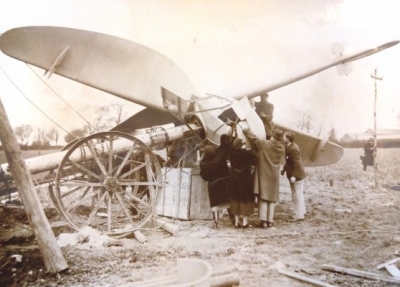Hello, it’s me again. With just one week of my internship left to go, I thought this would be the right time to look into the future of wind power. Traditional windmills are few and far between, and traditional mills that still operate commercially are rarer still. However, when we think of wind-powered production, wind turbines are one of the first things that spring to mind. I personally grew up with the view of the London array, the world’s largest offshore wind farm, always visible on the horizon.

Wind turbines had a much more humble beginning compared to modern versions such as the London Array. The first wind turbine was produced by a Scottish Professor in order to power the lights in his cottage – but it wasn’t until developments led by Germany to combat their post-World War One coal shortages that the idea really took hold. This picture is of one of these early German designs. It’s called a Ventimotor, and is shown here undergoing testing by Cambridge University in 1924. Designed for powering small agricultural machinery, this turbine was made to be portable – a far cry from the goliaths that are modern wind turbines. It is designs like this that helped prove the validity and possibilities of wind-produced electricity.

These days, wind turbines can be seen as rather mundane; part and parcel of our landscape, benevolent giants on the horizon that are often overlooked. There was a time, however, when they were treated with excitement and expectation – demonstrated in this 20th Century advertising card for Byrrh wine. The card was part of a series called ‘Looking Forward’ which presented wind turbines as the future of energy production. The design and colours used portrays the turbine in a futuristic, almost sci-fi aesthetic.
Whilst Mildred was showing me her selection of items on Wind Turbines from her collection, I was struck by the huge variations in early Turbine design. Some took their cue from traditional milling, with designs reminiscent of traditional tower mills. Others, like these Gems here, sought to modernise an old resource with brand new, revolutionary designs.